Fall camping trips are prime time to up your campfire cooking game. Let’s face it, a camping trip isn’t really a camping trip without a campfire. And as the nights get cooler and longer, you’re going to need the warmth and glow of the fire to keep you from the allure of your three-season sleeping bag just a little longer. Campers have been cooking over fires for as long as humans have been roaming these lands, and there’s a lot more to campfire cooking than a sausage on a stick.
In fact, there is almost no end to the style of cooking you can manage on a campfire. From grilling steaks and roasting yourself some chips, to making your own bread in a dutch oven, you can experience fine dining in the backcountry. This guide to campfire cooking will help you avoid common mistakes this fall and make sure you can add a little extra something — that isn’t grit — to your camping food.
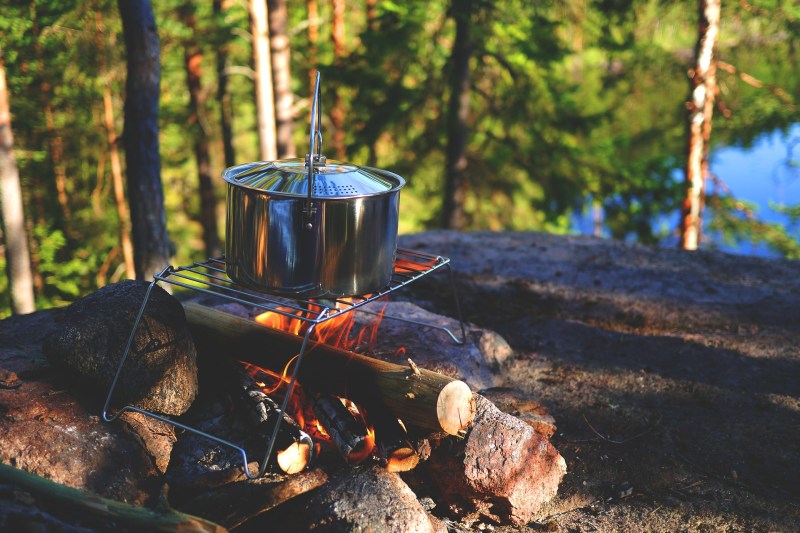
Get the right type of wood
If you want the best campfire to cook on, you need the right type of wood. If you’re heading to a campsite that sells wood, or you can stop and pick up a cord of wood on the way, you’re set. If you’re going to collect your own wood then look for dry and dead wood — as close to properly seasoned wood — as possible. Dry wood burns more efficiently and gives off less smoke, so you won’t have soot-caked food. Aim for hardwoods — oak, cherry, apple — and avoid softwoods — pine, cedar, larch — which burn too quickly and don’t give you a good bed of coals to cook over.
Woods containing resin rather than sap have a tendency to spit and can burn you, as well as give your food an odd taste. There are certain types of wood that are poisonous to cook over, too. Some of these have obvious giveaways, like the word poison in their name — poison sumac, poison oak — while others are less obvious — rhododendron, oleander. Stick to burning wood that you know the origin of, and if you’re not sure then dig a little deeper into the trees in your local area. Avoid driftwood if you’re camping on the beach, as these salt-saturated logs can release toxic chemicals.
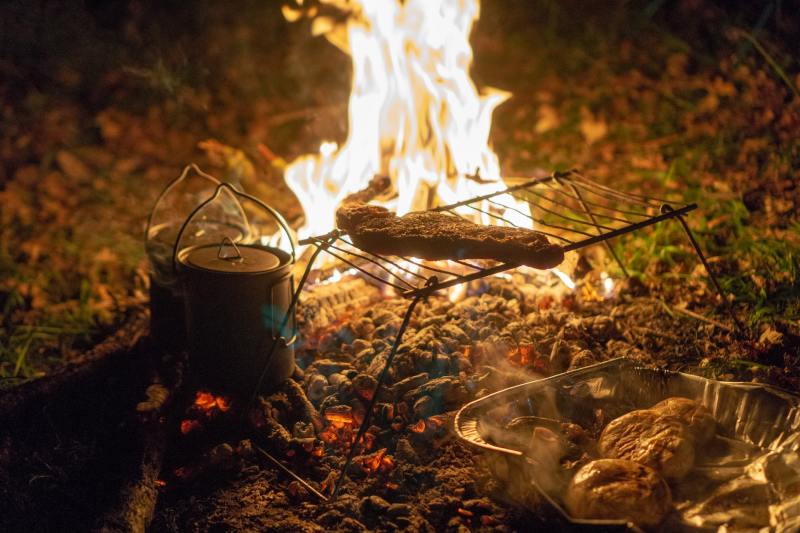
Cook on coals
Once you light your campfire, let it burn. Cooking on flames is a surefire way to char the outside of your food and leave the middle raw. It also coats your food in soot, which not only affects the flavor but can have negative long-term health effects too. Cooking on coals gives you a more reliable and consistent heat.
If you want to keep your campfire burning for warmth and light while cooking on your coals, prepare a secondary area to scrape some hot coals to and use this as your cooking space. This lets you keep your fire burning, but also get on with the cooking. This method also lets you keep replenishing your coals without having to take a break from cooking.
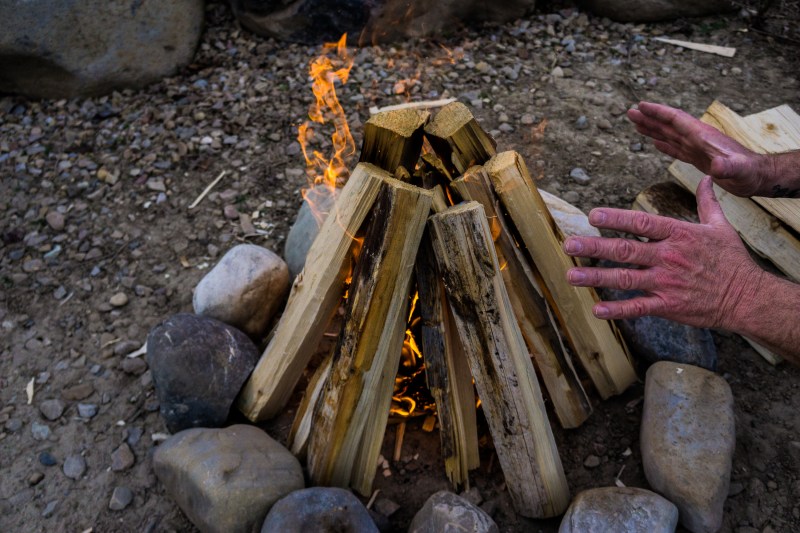
Safety first
Before you light your campfire, check out local guidance to ensure campfires are permitted at the time. If you go ahead with your campfire cooking, you should remember to follow campfire safety guidance. This includes clearing the surrounding area to prevent fire from spreading, and always keeping a bucket of water or sand close by to put your fire out if needed.
When it comes to cooking specifics, one tip is to keep a spray bottle of water nearby too. This can be used to douse any flare-ups that can either affect your cooking or your safety. Mostly, these flare-ups are caused by fats or oils dripping into the fire. When you’re cooking fatty foods — bacon, steaks, etc. — any small flames and flare-ups can quickly get out of hand, so a spray bottle is a must-have.
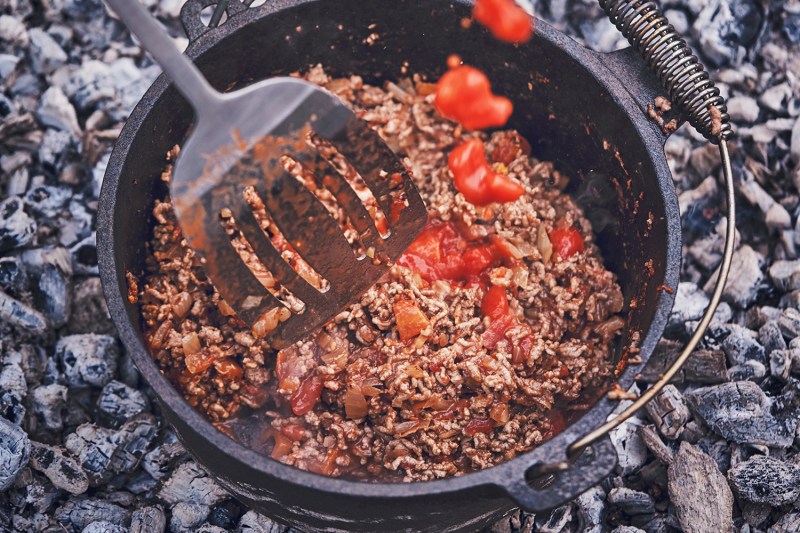
Try new ways to cook
There is nothing wrong with making s’mores over a fire, or skewering a sausage, but if you want to take things a little further, try one of the following.
Grill
A solid grill is easy enough to pack in, and you can make a racking for it over the fire using some stones or larger logs (just be sure not to burn through them). Grilling on a campfire is just like grilling at home, except if you want to regulate the temperature you have to move the grill up and down, so remember to take a heatproof glove, or use some sticks to lift your grill carefully. You can also use your grill to stand pans on — just be sure not to use Teflon pans, as a campfire is well above the recommended temperature use.
Rotisseries
You’ve seen it in the movies, but you can make a small frame and spit-roast your meat or vegetables across the top of the fire. A rotisserie can be any size, all you need is two Y-shaped sticks to rest your spit on. Sharpen the bottoms and dig them securely into the ground on either side of your fire — far enough away not to burn — and rest your spit over the top. If you’re going to make your own spit stick, skin and clean your chosen stick to avoid ending up with any bark in your food. Choose a green stick if possible, it’s less likely to burn through and drop your dinner into the fire.
Dutch oven
A dutch oven — like a cast iron crock-pot with a tight-fitting lid — can be used for making anything from a hearty wilderness stew, to slow cooking a shoulder of lamb in spices. These cast iron pots are best suited to recipes that call for long cooking processes, and for this reason, they’re favored by survivalists who spend long days in camp, rather than the thru-hiker looking for a quick and easy meal — not to mention they’d have to carry it! You can even make bread and biscuits in a dutch oven.
Hang a pot
Hanging a pot over the fire is a simple way to cook stews, cowboy casseroles, or just boil water for a coffee. There are different ways to hang your pot. The simplest hanging method is to find a long stick with a y-shape at one end, lay this stick over a log near your fire, and pin down the end furthest from your fire. This should now leave the y-shaped end of your stick above your fire, secure and ready to suspend a pot from. Other methods involve hanging a pot from a tripod or rotisseries setup using a chain, or building an adjustable Burtonsville cooking rig.
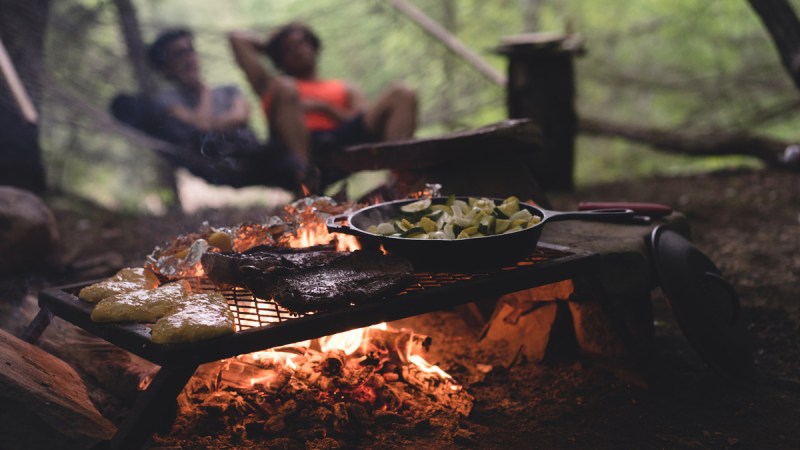
Top tip: prep at home
The more preparation you can do at home, the more successful and easier your campfire cooking is going to be. This could be chopping vegetables so they’re ready to go, marinading meat so it’s ready to throw on the grill for perfect flavor, or making an entire chili that you can reheat and enjoy. It could be as simple as wrapping your potatoes in tin foil so that they’re ready to bake.



